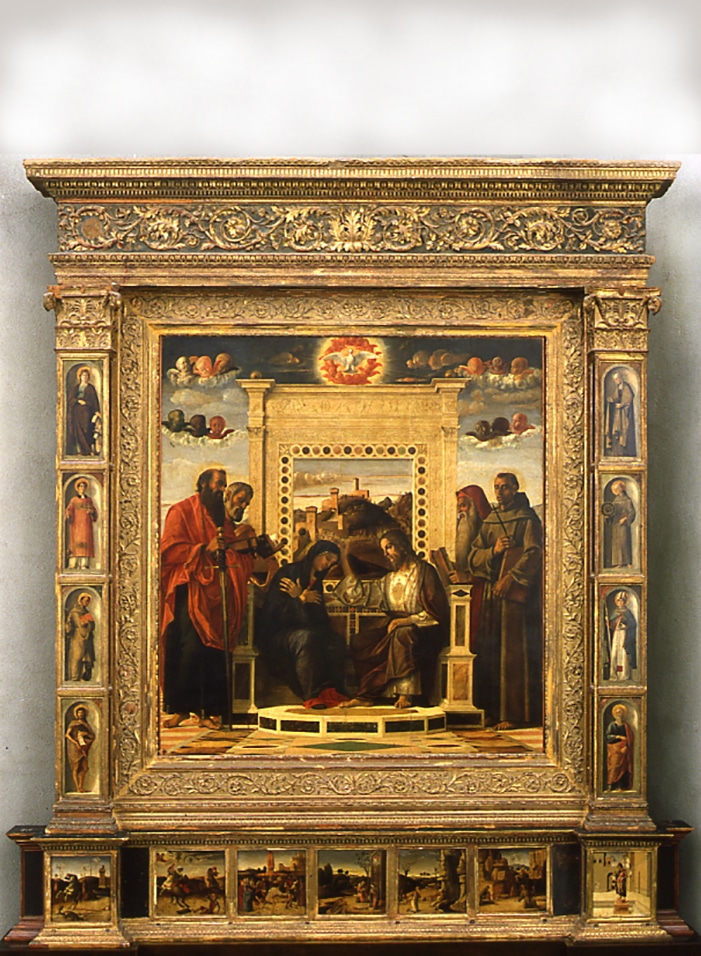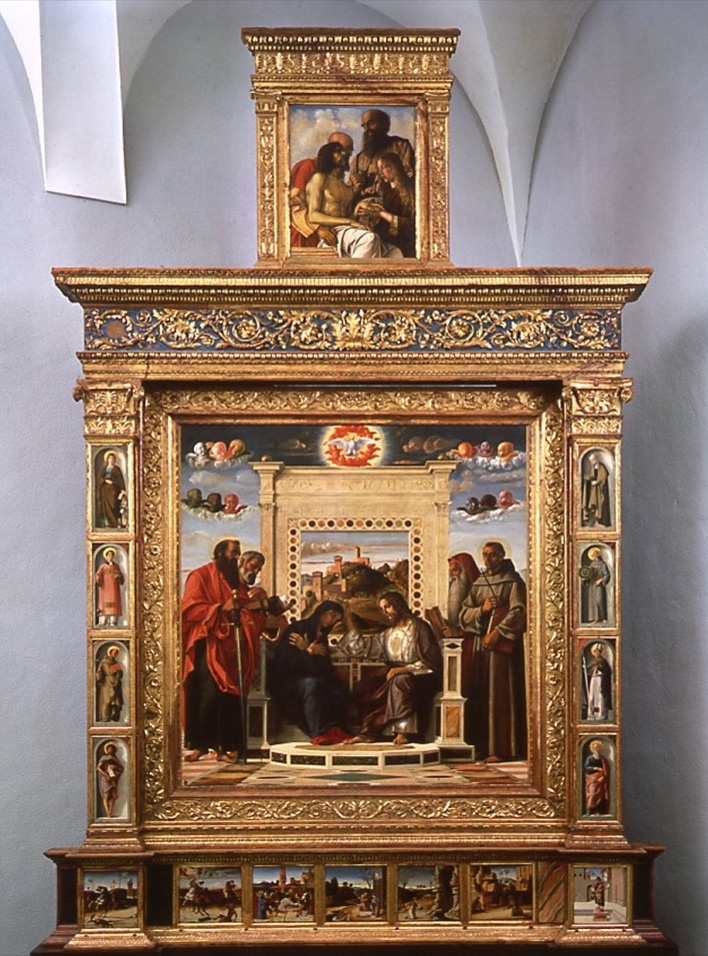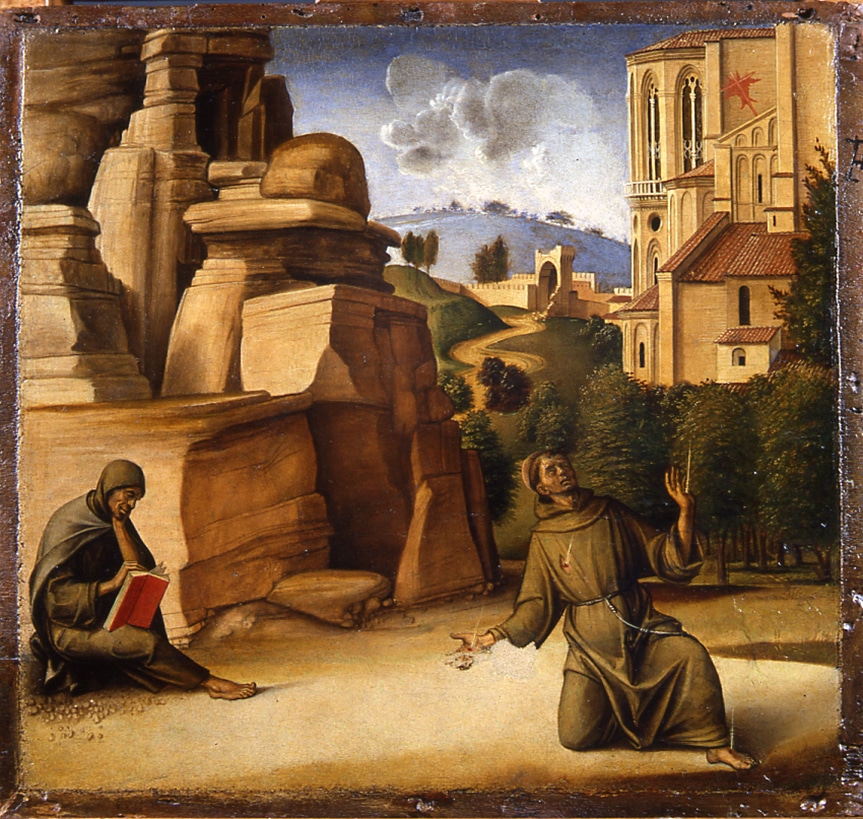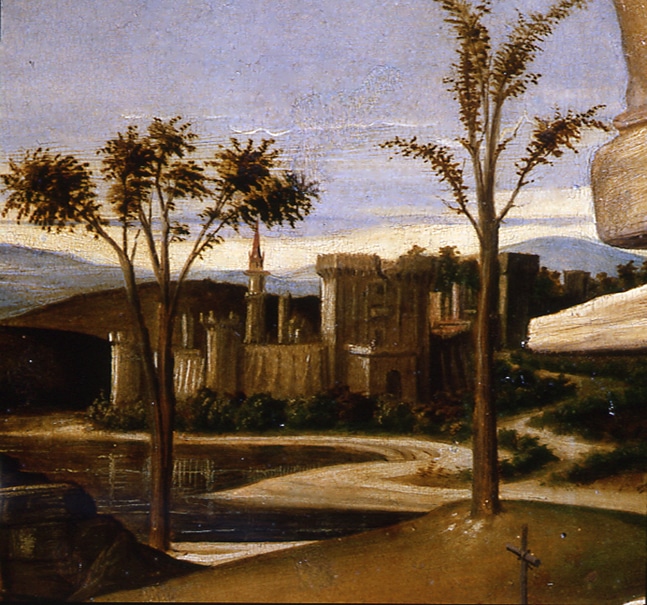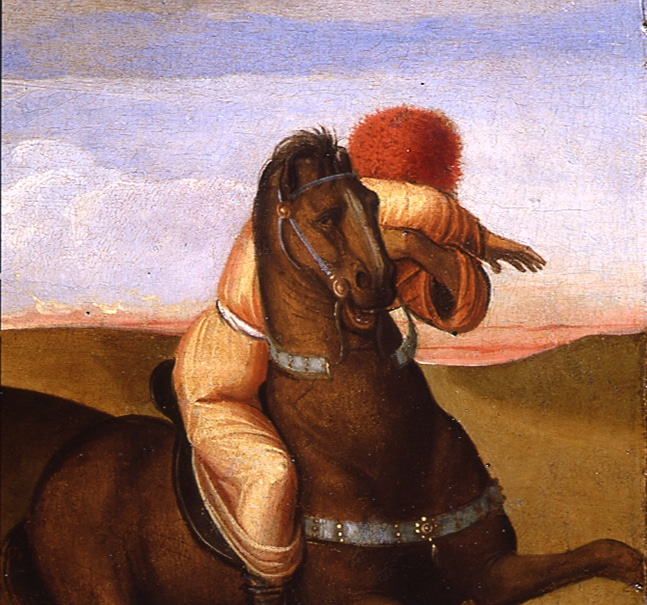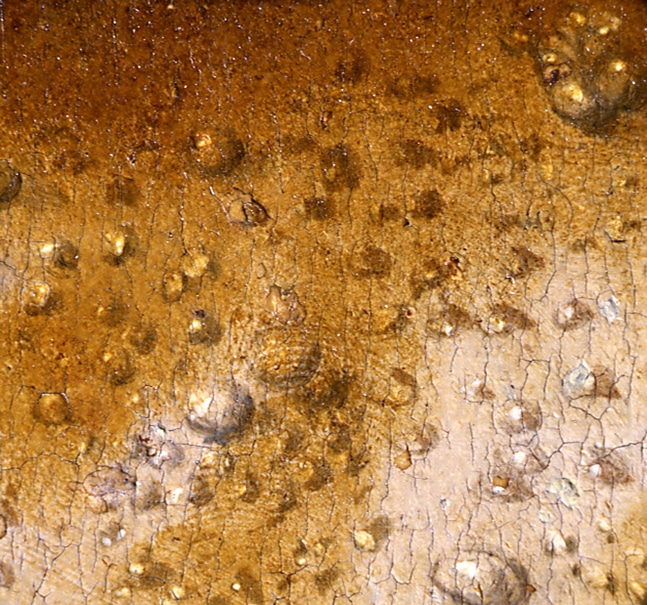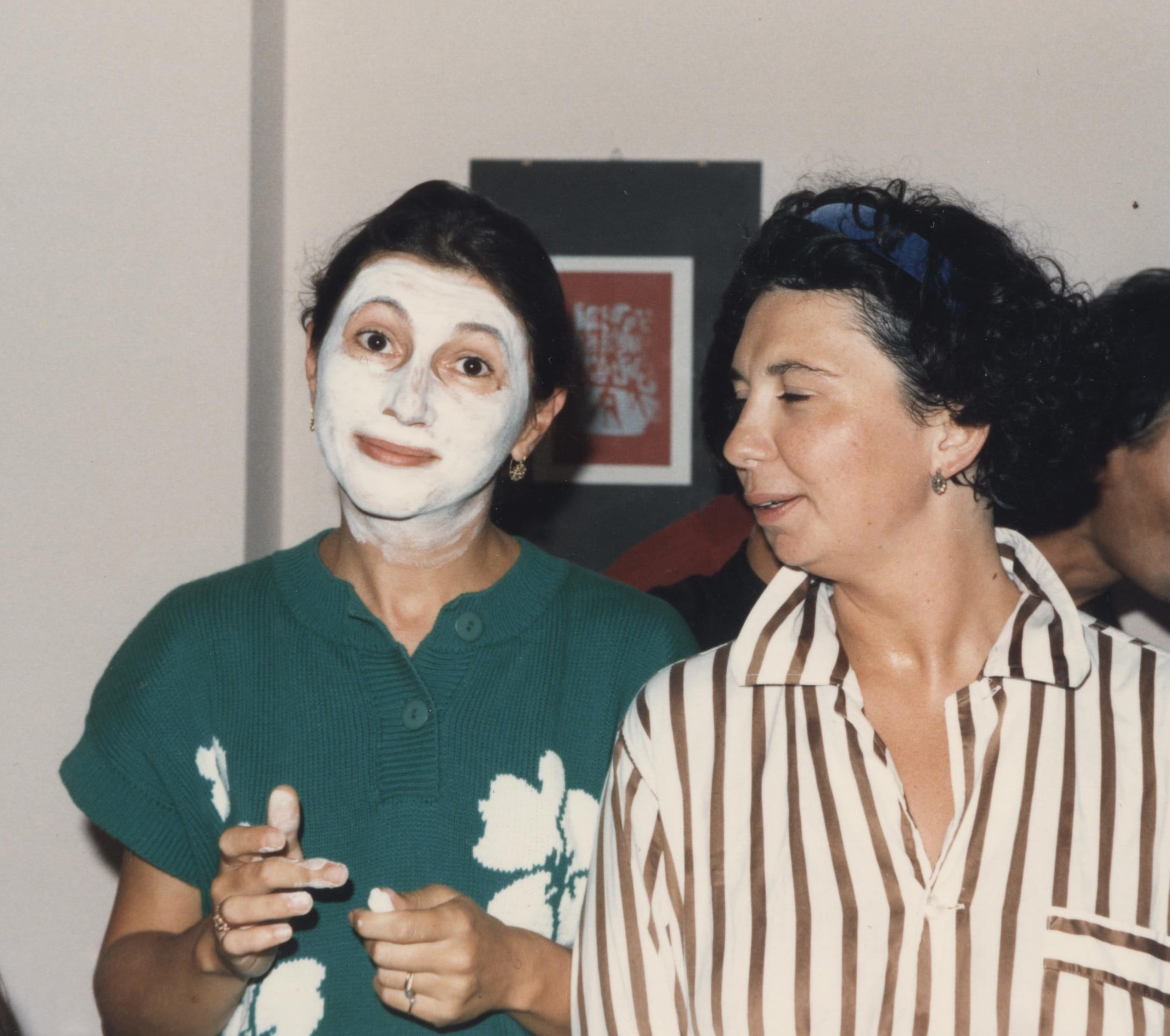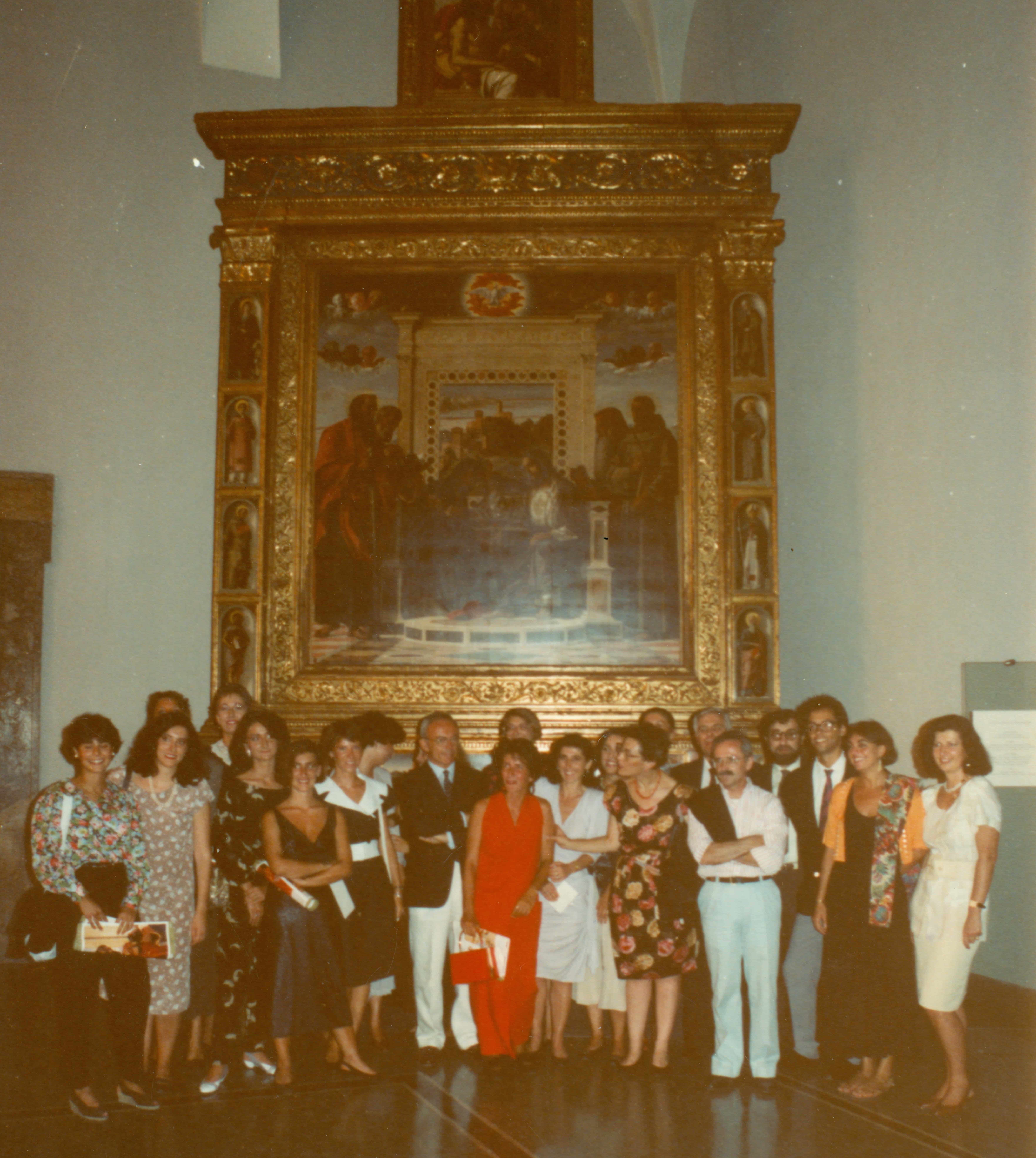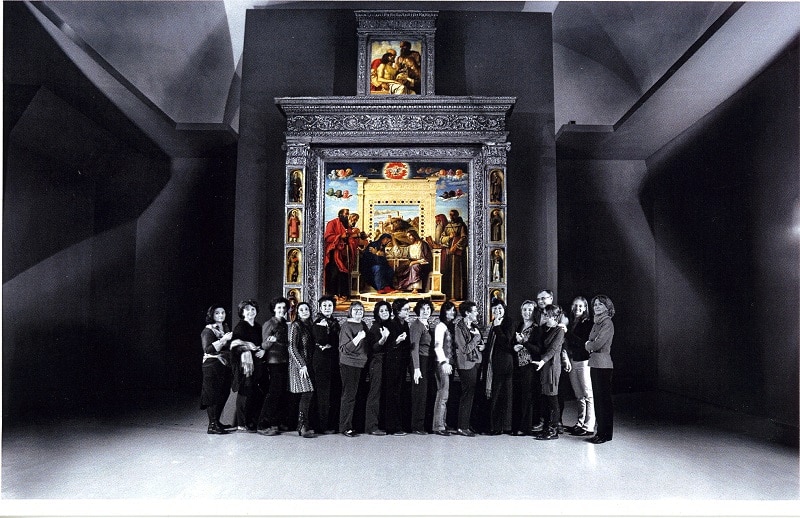The reassembled Altarpiece of Giovanni Bellini
The treatment and re composition of the Coronation of the Virgin and the Lamentation over the Dead Christ make up what we might call an “historical” treatment, if for no other reason than the period involved. It was undertaken to commemorate the first ten years of activity of the CBC, with the aim of producing a treatment which would exemplify our approach not only at a technical level but also its integration with our interest in artistic techniques and the history of conservation.
After looking at various possible works in Venice, Milan, Perugia, Naples and Florence, an unexpected and fascinating project came our way with the support of Rosaria Valazzi (Superintendency of Artistic Works of the Marche), Fabrizio Mancinelli (Vatican Museums) and Michele Cordaro (Istituto Centrale del Restauro): this involved the restoration and temporary reassembly of the long separated parts of Bellini’s Pesaro altarpiece, held in Pesaro and Rome.
In a short time the project had become operational thanks to the Pesaro Town Council agreeing to fund the work on the complex assembly of the frame, predella and side pilasters, while our contribution was the treatment of the two principal panels. Detailed description of the treatment, the system used for the original construction of the structure, the artistic techniques, conservation history and reflections on the choices made in particular on the level of retouching are available as a download (in Italian) in the section Publications of this site. It gives us particular satisfaction to look back on the issue of of natural and applied patinas which we approached rather nervously, though with the blessing of Giovanni Urbani who, in 1947, working as assistant to the well-known Mauro Pellicoli,
had treated the very same panel painting at the Istituto Centrale di Restauro under the direction of Cesare Brandi. This treatment had acted as an important stimulus for Brandi in the formation of his theory of restoration, and the results had provided one of the key examples supporting Brandi’s criticisms in the cleaning controversy with the National Gallery of London. However, scientific progress and the increasing availability of materials for treatment compared to the 1940s meant we were able to remove residues of later applied coatings without harming Bellini’s original delicate glazes. In the end, it was fascinating to compare the techniques we used on the Coronation with those for the Lamentation, which had had a more complicated conservation history with more aggressive past treatments.
Accompanying the treatment a detailed search was carried out amongst the archives, publications, past analyses and the photographic record. A spirit of collaboration led to the rich contributions to the catalogue, published by Marsilio. The treatment itself, given the special nature of the project was carried out in Pesaro and Rome by members of CBC and a few close friends of the group, under the management of Carla Bertorello. The pleasure of taking part in such a great adventure spread throughout the team to the three Works directors and even infected the guards at the Museum:
everyone worked together with an enthusiasm and a sense of harmony which we have rarely seen equalled. This included the inauguration on 31 August, 1988, illuminated by the theatre technicians leant to us by the Director of the Rossini Opera Festival, who also offered us special access to the dress rehearsal of the Festival’s production of La Scala di Seta. To crown the unique occasion, we were had one of the make-up artists of the stylist Diego della Palma in attendence, who prepared everyone perfectly for the event.
In 2008 we had the opportunity to check the work twenty years after the event, when we carried out maintenance and helped prepare the work for a large exhibition on Bellini at the Stables of the Quirinale. While the painting was in good condition, the frame and supporting structure had weakened and degraded over the years. So we repaired and reinforced the work with the help of our expert friend Roberto Saccuman: this treatment is described in an article in Kermes which is also available as a download on this site.
Michele Cordaro. Istituto Centrale del Restauro: Maria Rosaria Valazzi, Superintendency of Artistic Works of the Marche (for the Pesaro panel): Fabrizio Mancinelli, Director of the Vatican Paintings Gallery (for the Vatican panel)
Coordinator: Marisa Tabasso, Istituto Centrale del Restauro
Laboratory for materials science: Pier Luigi Bianchetti, Ernesto Borrelli, Antonio Giralico. Paolo Gusso, Maurizio Mariottini, Istituto Centrale del Restauro
For the Lamentation over the dead Christ: Nazareno Gabrielli, Laboratory for scientific research, Vatican Museums For X-Ray imaging: Maurizio Diana, Vincenzo De Stefano, Mario Massimi, Adalberto Melchiorri, Antonio Porro, ENEA
For IR-riflectography: Duilio Bertani, Maurizio Cetina, Istituto Nazionale di Ottica di Arcetri
Rodolfo Fiorenza, Pasquale Rizzi
Giulio Filippini
CBC, con la consulenza di Maria Antonietta Gorini
